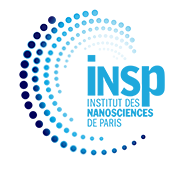Operando Investigation of Nanocrystal based Device Energy Landscape: Seeing the Current Pathway
Résumé
Due to their unique optical properties, colloidal nanocrystals (NCs) have transitioned from a solution processable luminescent liquid to an established building block for optoelectronics. As devices get more advanced, a higher degree of refinement is also required for the probe used to investigate their electronic structure. For long, device optimization has relied on the measurement of physical properties of the pristine material, assuming that they would be maintained after device integration. However, such an assumption neglects the realistic dielectric environment and possibly applied electric fields to drive the device. Hence, tools compatible with operando investigation of the electronic structure are required. Here, we review and present additional results relative to the operando investigation of infrared NCs using photoemission microscopy. This technique combines the advantages of photoemission to unveil band alignment with a sub-µm spatial resolution that is used to correlate energy shift to the device geometry. This method gives direct access to parameters such as diode built-in potential, transistor lever arm, or even the vectorial distribution of the electric field that are otherwise only attainable through indirect methods involving modelling. We provide indications and precautions to be used in the design of devices to permit the operando analysis via photoemission techniques. It is, therefore, a very promising tool for the optimization of NC-based devices.

